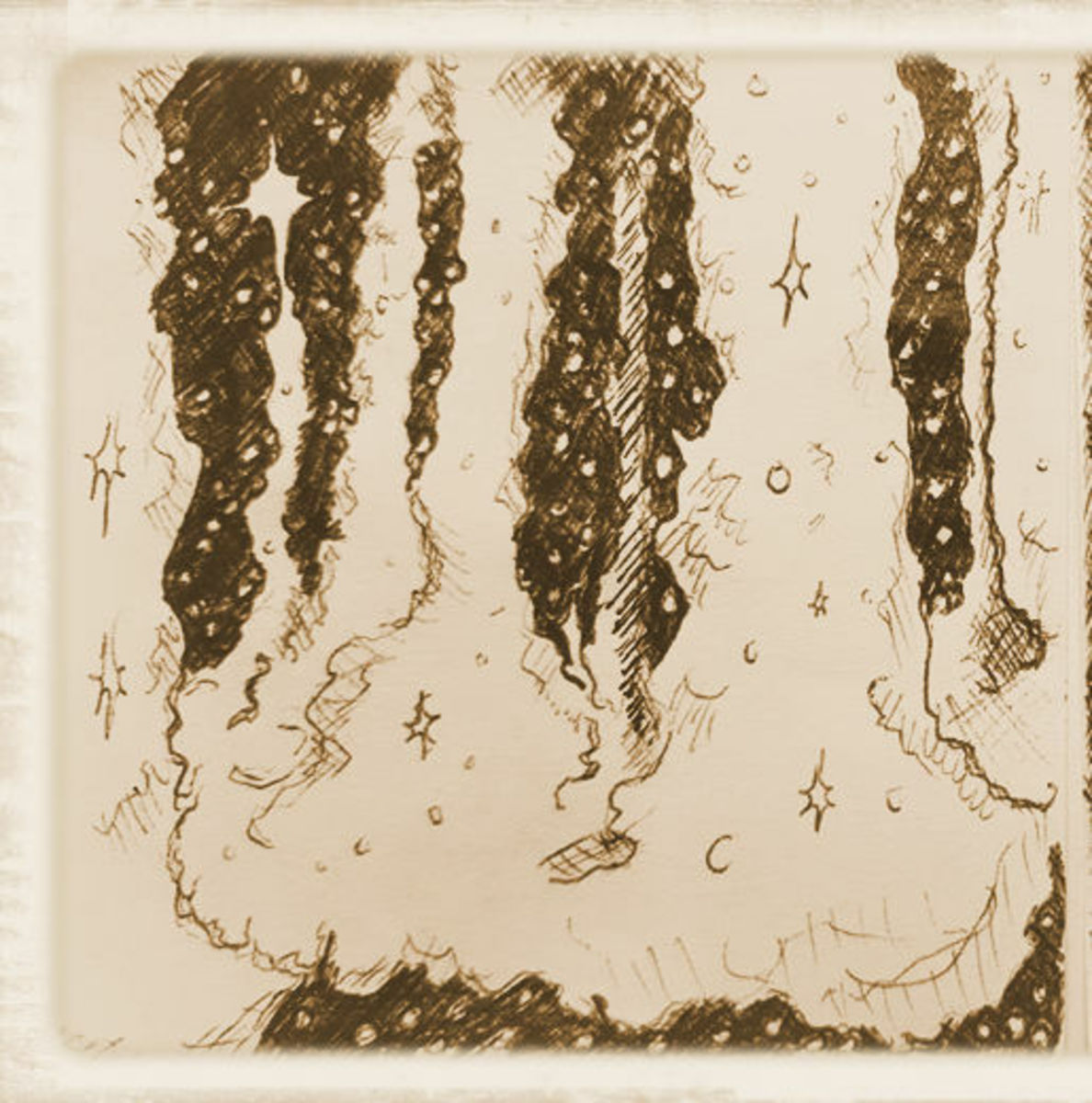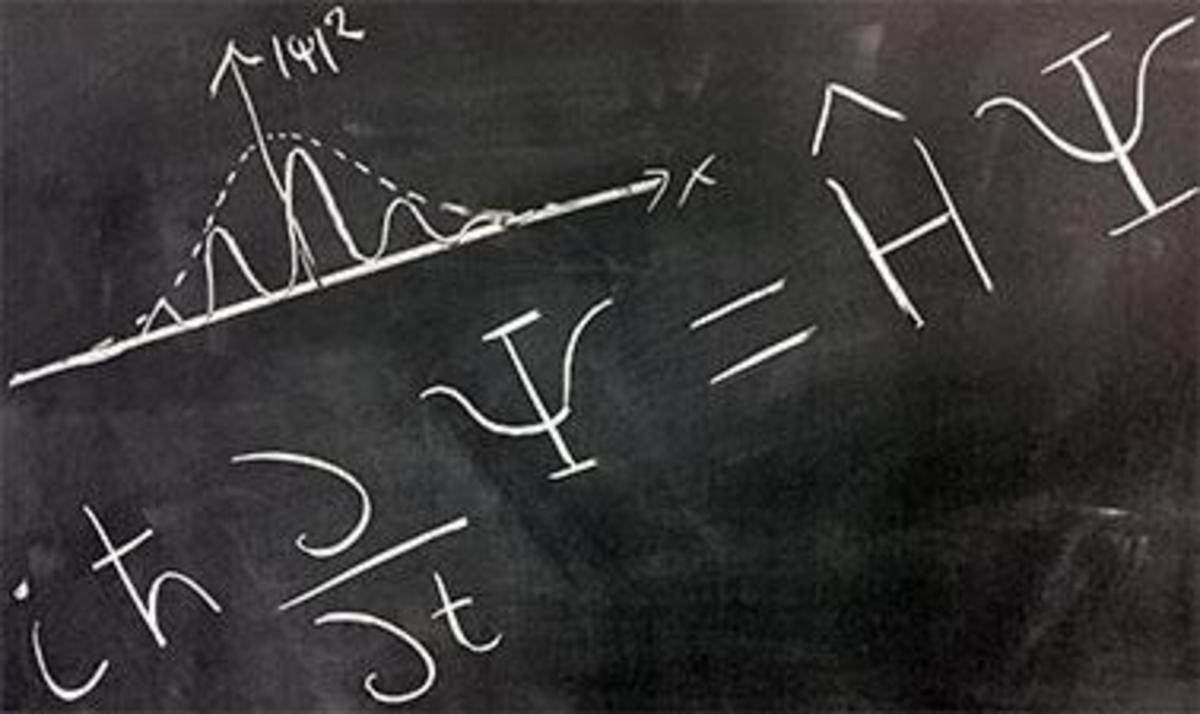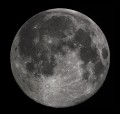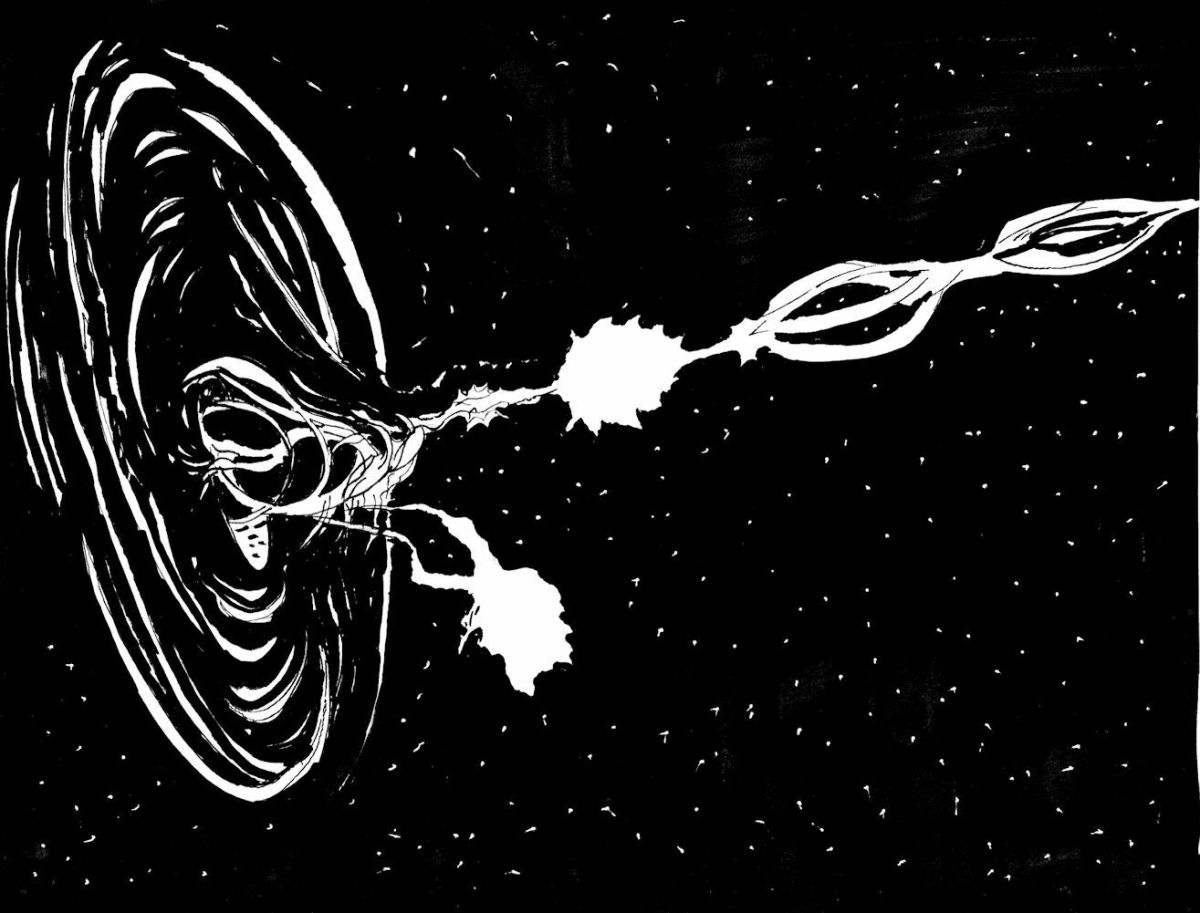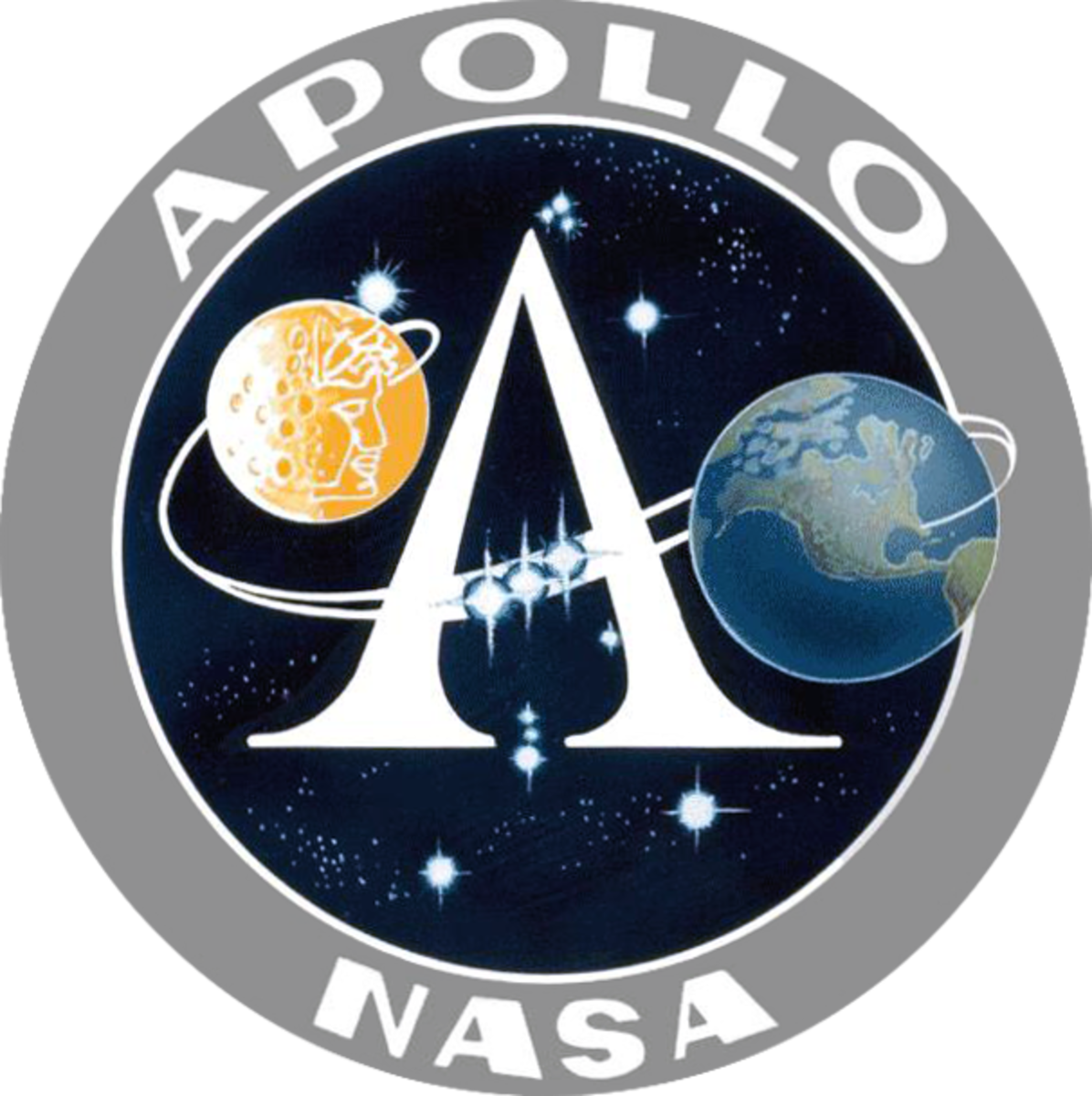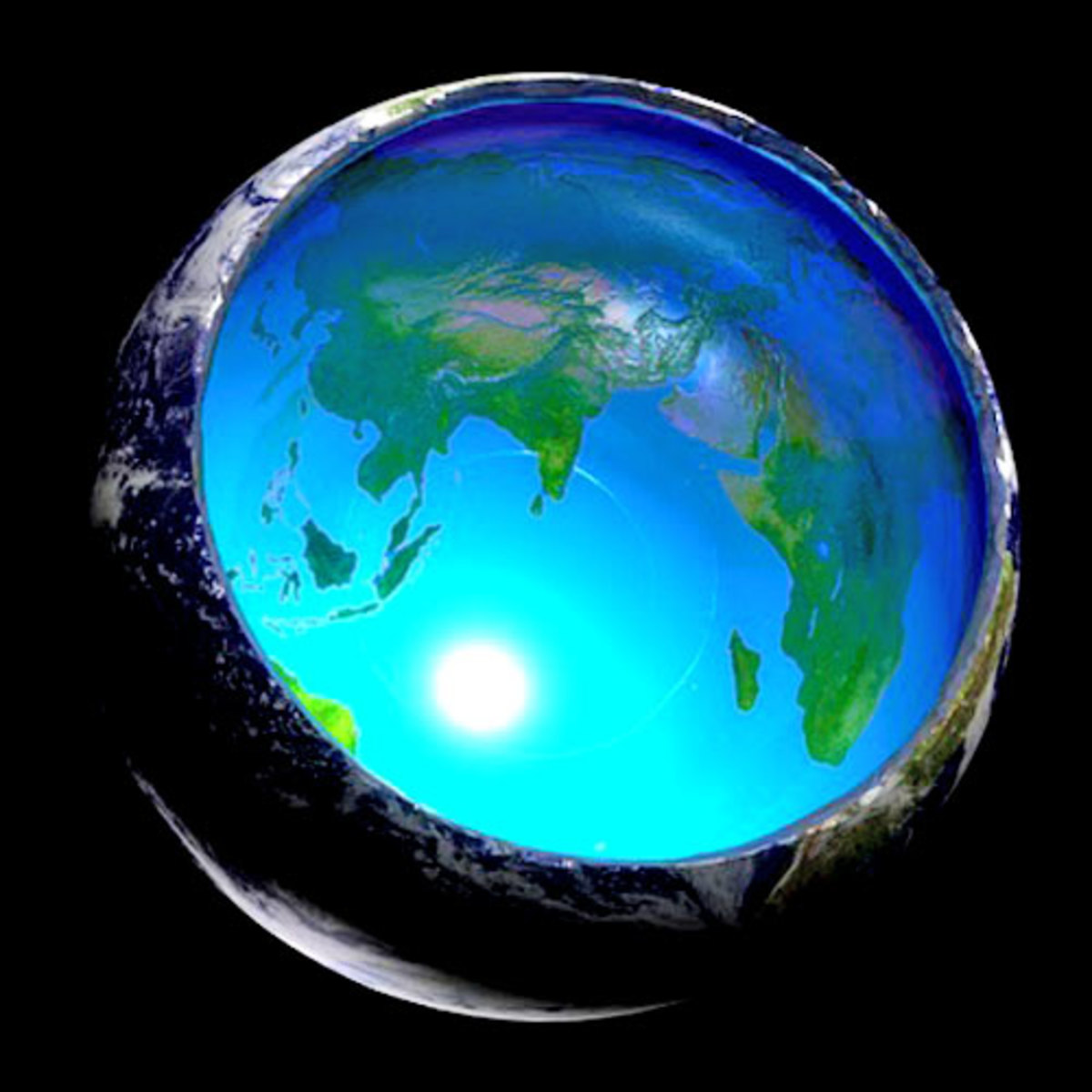How Gravitation Works
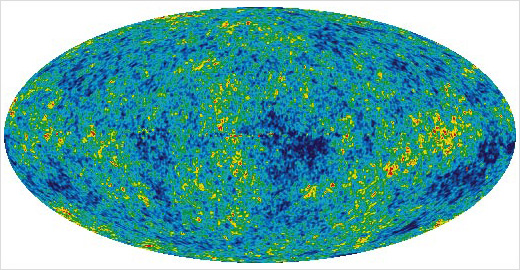
The nature of gravity
Gravity is a force that no one completely understands. Einstein’s summation states that matter tells space-time how to curve and the curvature of space-time tells matter how to act. Thus the space-time-gravity trio behaves like a feedback system. The curvature of space-time is Einstein’s expression for gravity. But general relativity (GR) does not work on the quantum realm, so we are left without a quantum relativity and quantum gravity/curvature. At the atomic and sub-atomic level there are problems with classical and quantum physics that have as yet to be resolved completely outside of fixes that are attached. There are clues and experiments that suggest that there is an answer. Hereinafter is presented a hypothesis that will attempt to explain the mysterious force of space-time curvature on all levels. We must also consider that gravity as a force is one of the weakest forces of nature, in comparison, the electromagnetic force is some 10^39 time greater in strength (10 followed by 39 zeros). Although it is stronger than gravity by far, it is not apparent mainly because of the near balance between attraction and repulsion. But when an imbalance does occur in a magnetic or electrical system, the results are spectacular, including a complete alteration of space-time curvature such as found near magnetars and the event horizons of charged black holes.
The cosmos exists in a condition of two co-existing fundamental states, the real manifest cosmos of energy and matter and the condition known as the Planck False Vacuum State from which virtual energy and particles manifest. One state is in a condition of unity and the other in a state of diversity-division. Out of the Planck False Vacuum state is born such things as virtual particles which can interact with the matter of the cosmos. Further, forces such as the proven Casimir effect operate seemingly out of this “void”. Virtual particles have been observed in high energy experiments and it is the interactions with the magnetic field that separate the virtual pair into matter and anti-matter parts. As long as they don’t come together, they can exist in the real cosmos indefinitely. The cosmos is filled with high energy sources ranging from star cores, supernovae and black holes, all of which have been active from the very beginning of space-time.
Much of what we see also exists in a state far from equilibrium, which is why we have visible change that is so easily detected. All manifest matter in the universe exists in a broad range of states. There are high energy regions in galactic cores and super-massive stars and also cold dark voids. Energy flows within this differential from places of concentration to a place where it is lacking. Given the turbulent structure of much of the cosmos, the path of energy from its concentrated state to its lowest expression is often a winding and convoluted path. This particular reality is essential where the second law of thermodynamics is concerned, as it allows for the seeming self-organization we call life within the context of thermodynamics. Gravity in a combined and unequal manner contributes much to the turbulence. Gravity too exists in this curious condition, especially when the cosmic acceleration is concerned.
From these observations it has been determined that the Planck False Vacuum State is not a void, but something else altogether existing in a condition beyond our current understanding. Specifically, it is the potential birth state of all that there is and is to be and also its return state. The formation of virtual particles is something that occurs constantly and this often interacts with the cosmos, so that even currently, change occurs continuously due to the existence of virtual particles manifesting from the Planck False Vacuum. It is this interaction that can account for realities like quantum jumping, quantum tunneling, the Casimir effect, matter, energy, anti-matter, quantum gravity and quantum relativity. In current thinking, dark matter and dark energy (that which is not currently visible to us) are also born from here. It may be that the dark matter and energy are the effects of the Planck False Vacuum State in action. The Planck False Vacuum State is a kind of reference base for the manifest cosmos in all is permutations and combination. It may well be that this base allows for things like ‘negentropy’ and complexity as we see as part of the manifestation of reality. We already know what effect the Planck False Vacuum State has on the visible cosmos. If God creates the cosmos on an ongoing basis, it is from here that it is done, as this is no passive condition, but an ongoing and dynamic state. The Planck False Vacuum State exists outside of the limits of time, but has a profound influence on space-time-curvature.
There are questions for sure about the real nature of reality based on what has already been covered. Let us delve into this for a moment. From the early days of atomic science, we have grown to learn that matter is mostly “empty” space. The term empty space here is used conditionally considering what has already been disclosed concerning the Planck False Vacuum State and its interaction with the existing cosmos. Three dimensional space as we know it is really a fractal dimension. In other words, it is a fraction of a dimension. To understand this we need to consider the concept of the Cantor Set as seen in fractal geometry. The Cantor Set forms the foundation of the ideas behind fractal geometry. The basic construct is the division of a ‘solid’ line into thirds and removing the center part. The two remaining whole parts are then divided into three and the center part is removed again. This is done until only a fine ‘dust’ remains. This is within the one-dimensional construct of a line. This concept can be carried from one to two and three dimensions. Thus the structures we see in three dimensions are actually closer to two dimensions, but always greater than two if just greater. When we look at galaxies, we see that they are places that are flat spirals, elliptical or spherical. They are made up of numerous stars, planets, bits and pieces and dust. They contain lots of “empty space.” In fractal geometry, add to the idea, the concept of complex numbers involving real and imaginary numbers, then we enter into the realm of fractal geometry itself with its weird self-similar and self-affine patterns; some of which are very close to things we see in the real cosmos and in nature. Fractal patterns and maps are generated by iterated calculations that can be analogous to discrete quantum events and the idea of time. These calculations produce three states that are analogous to phenomenon in the real cosmos that suggest accelerating expansion, collapse into black holes and conditional stability.
Iterations are analogous to discrete occurrences that always occur in the quantum realm. The whole gist of Einstein’s photoelectric effect, which now has been proven and used in modern technology, is based on discrete occurrence between matter and energy, especially in phase state changes and specific wavelength interaction with electrons and nucleons. An experiment was conducted on the gravitational effect on a falling neutron, which turned out to "fall" in discrete jumps. Neutrons were chosen because of their intrinsic neutral charge electric moment to avoid as much of the intense electromagnetic action as possible. What does this prove? Gravity or the curvature of space is discrete; similar in type to the photo-electric effect. In fact, it may be mainly mediated through the neutrons as electrons and protons can easily overcome gravity, especially at the quantum level
“Physicists have observed quantized states of matter under the influence of gravity for the first time. Valery Nesvizhevsky of the Institute Laue-Langevin and colleagues found that cold neutrons moving in a gravitational field do not move smoothly but jump from one height to another, as predicted by quantum theory. The finding could be used to probe fundamental physics such as the equivalence principle, which states that different masses accelerate at the same rate in a gravitational field (V Nesvizhevsky et al 2001 Nature 415 297).” (5)
The Planck False Vacuum State constantly interacts with existing real matter. All around us at all times particle pairs are constantly popping into our universe in matter-antimatter pairs. Most annihilate almost immediately upon birth. Some manage to separate due to electromagnetic forces, the presence of black holes or an encounter with ordinary matter. It is the encounter with ordinary matter that concerns us here, for it does a few things. It creates quantum gravity similar to what occurs in the Casimir effect. It creates a type of quantum Brownian motion. It helps to keep atoms stable.
Dealing with mass and its relation to gravity, we have to know what the exact mass of a planet is in order to calculate the quantum gravitational effect in the sum total. This is not as easy as it appears as we have no exact way of determining what a planet; any planet is made of chemically in its total. We know for instance that iron is more massive than hydrogen and that uranium is more massive than both of them. What we do have to go on is the gravitational influence of the sun and the planets. Table 1 below indicates what the gravitational influence compared to Earth for the sun and the planets.
Acceleration Due to Gravity Comparison
Body Mass [kg] Radius [m] Acceleration Due g / g-Earth
to Gravity "g" [m/s²]
Sun 1.99 x 10^30 6.96 x 10^8 274.13 27.95
Mercury 3.18 x 10^23 2.43 x 10^6 3.59 0.37
Venus 4.88 x 10^24 6.06 x 10^6 8.87 0.90
Earth 5.98 x 10^24 6.38 x 10^6 9.81 1.00
Moon 7.36 x 10^22 1.74 x 10^6 1.62 0.17
Mars 6.42 x 10^23 3.37 x 10^6 3.77 0.38
Jupiter 1.90 x 10^27 6.99 x 10^7 25.95 2.65
Saturn 5.68 x 10^26 5.85 x 10^7 11.08 1.13
Uranus 8.68 x 10^25 2.33 x 10^7 10.67 1.09
Neptune 1.03 x 10^26 2.21 x 10^7 14.07 1.43
Pluto 1.40 x 10^22 1.50 x 10^6 0.42 0.04
Table 1. (1)
Considering the above we find a radical difference between the masses of Earth and Jupiter, yet Jupiter’s gravitational acceleration is only 2.65 times more than the Earth’s. Jupiter contains the volume equivalent of 318 Earth’s. Further, looking at the Earth-Moon relationship in the same light, the moon has 17 percent of the acceleration due to gravity than that of the Earth, yet in this relationship, the Earth is some 80 times more massive. It has been proven that the Earth and moon are similar in make up. It makes you ask why? Clearly there is a process involved in gravity that is not part of a straight mass gravity numerical equivalence. Is it possible that in gas giants, which lack heavier elements and thus neutrons, there follows a weaker gravitational effect? There is something else involved. Part of that something else is what each planet is made of. In the case of the Earth, we are pretty certain that it comprises chiefly of silicates, iron and rocky material. In the case of Jupiter, that we cannot directly access; we know that the atmosphere is made up of about 98 percent hydrogen, 2 percent of helium and other elements and molecules. We don’t really know what the interior is made of. We have to guess and this leaves a lot of wiggle room as to what the real mass of Jupiter is. It can be inferred from its relationship with the sun and the resulting wobble of the sun caused by Jupiter. Due to the presence of the other planets, this becomes an analysis of the N-bodied problem, something that not even the likes of giants like LePlace, Lagrange, Poincare and others could solve. Finding the true mass of Jupiter is something that is partly inferred, partly calculated and partly intuited.
We are told that cosmic bodies attract one another by gravity and that the larger the body, the greater the gravitational force it has upon all other bodies. In turn, it is attracted by all other bodies. This is all well and fine if you could personally visit other planets to find out yourself. Further, why must gravity be an attractive force at all? We don’t actually know for sure at this juncture in history! There is thankfully, an easier way to deal with the force, with some qualification.
Any worker in a sweatshop knows instantly the import of gravity on various sized bodies. They ought to; they are forced to carry backbreaking loads for long stretches with little return on their effort. All one has to do to feel the effects of increased gravity on a larger mass, is to find and lift a heavy object where one stands and carry it around a while. In the act of standing, grasping and then lifting the heavy object, one's total mass with the carried object becomes greater and thus the feeling of gravity's crush is intensified. Thus, one can prove one of Newton's basic principles concerning gravity and corroborating Newton in the process. That is;
Fg = MmG/r2
Where Fg is the total gravitational force
M is the major mass
m is the minor mass
r is the radius between the two centers
and G is the gravitational constant
NOTE: The gravitational constant is subject to some controversy when scrutinized closely, but is good for general purposes and the limits with which we are dealing. In the above case, G is not a vector, so in effect can operate either as a pull or a push. It is merely an expression of a scalar and not a modulus. This could have implications if the force that causes cosmological accretion on the scale of the whole cosmos is the same one that holds stars, planets, solar systems and galaxies together. We could be literally looking at two sides of the same cosmological force.
There is another way we can figure things out. Consider that all things being relative, we can look at masses relative to one another. Look at the Earth and moon again. By studying the Earth-Moon dance around each other and determining the barycenter of the system, we can surmise the real mass of the moon as compared to the Earth, even though we don’t actually know what is below the lunar surface. We can see it as a total mass relative to the Earth.
"The barycenter is said to represent the center of mass of the Earth-Moon system, and is represented by a theoretical point about which both the Earth and the Earth's moon orbit as they revolve around the Sun. The numerical values, the measurements offered for the different events considered herein, vary according to different astronomers. But, we shall not concern ourselves with the debate of numbers, but rather the thrust of the relationship, the proportionality behind the spacetime events themselves. First of all, by speaking about the barycenter in these terms, one understands that the event reflects constant movement. And, even speaking about a theoretical "point", about which both the Earth and its moon rotate (orbit), is daring, since no such point actually exists as such, fixed in spacetime for all space and all time. In fact, the so-called barycenter itself varies regarding its own placement in relation to the Earth and to the Earth's moon." (2)
Larger body m1 (mE=1) Smaller body m2 (mE=1) a (km) r1 (km) R1 (km) r1/R1
Earth 1 Moon 0.0123 384,000 4,670 6,380 0.732
Mass distance relations of the Earth and Moon and common center of mass
Mercury Venus Earth Mars Jupiter Saturn Uranus Neptune Pluto
0.055 0.86 1.0 0.11 318 95 14.5 17.2 0.002
Mass in Earth masses of the planets
Tables 2. (4)
Thus we have to take an average value for the system where we take the mean distance between the Earth and the Moon and find out where the barycenter is located at that moment. From there we can determine a ratio of distance from that point for the Earth and the Moon. We can only compare one relative to the other and vice versa. Given the relationship of the barycenter where the moon is at perigee, versus apogee, we can derive an average of 5,525 Km. The semi-major axis (a) for the orbit of the moon is given as 384,000 Km. The ratio of the distance between the center of the Earth and the center of the moon for the barycenter is an average of 1:69.5 approximately. This differs from the mass ratio of 1:81.3 as calculated from M1:m2. The gravitational mystery deepens. Clearly, the moon is different enough from the Earth to create such a result, yet we know that from a barycenter point of view, the moon has the balancing mass of 1/69.5th of the Earth. Yet the volumetric mass is some1/81.3rd of the Earth.
When bodies are accreting out of dust, the first stage of that growth is mediated primarily by the electrostatic force. After growing to about 100 Km, gravity starts to take over as the major contributor to the growth of a body in space, likely in orbit around a star or planet. For quantum gravity to have an effect therefore, it must be included in the accretion process at the point before the relativistic curvature kicks in. We are interested in how it all starts in the stage of the very small in the case of electrically neutral particles.
A probability bell curve can be constructed for possible interactions that will result in quantum accretion of two non-charged atoms. Two oppositely pointed and converging arrows represent only two out of an almost infinite vector input of the possible force input from virtual manifestation from the Plank False Vacuum. In addition, the bell curve must be seen in 3D. Two dots are the real particles being acted upon. The bell curves are displayed for both real particles. The real particles are close enough for the Casimir effect to occur. This is not a function graph for quantum gravity, but rather a probability function of two particles being forced together due to virtual input from all possible vectors. The greatest probability results when virtual particle manifestation is such that it forces real particles directly together. They are all in line. The least probability results when virtual manifestation occurs at 90 degrees to the line up of the two real particles. In fact, in this alignment, they are likely to be driven apart rather than to accrete. All other vector angles of manifestation represent an increasing or decreasing probability of accretion.
Conversely, if the real particles are being driven apart, the top and bottom arrows would be reversed and the real particles much further apart. We must keep in mind that interactions that will directly affect particles are via the leptons, i.e., the electrons and positrons. In the case of metals, when accretion occurs, binding between atoms occurs due to electron sharing in the free electron phenomenon. Since the probability of the above scenario is so rare, it is little wonder that gravity results in being such a weak force overall. In fact, there is about as much chance of the nucleus being directly stuck by a free neutron, as there is for an alignment to allow fundamental accretion between two neutrally charged atoms. In the early crowded cosmos, the chance of this occurring was much greater than now, owing to the closer proximity of a large number of particles. This fact is important for the early clumping of matter and is observed in the COBE and WMAPP anisotropic temperature differential maps of the background cosmic radiation. There were also a large number of photons that also played a part, particularly in the Casimir effect. The chances of virtual particles being lined up correctly for any two real atoms were substantially higher. This created the lumpiness and the seeds for other processes later on during inflation. Also, the early creation of elements heavier than H2 allowed for accretion around these atomic seeds.
It is easier for the quantum gravitational force to accrete larger lumps of material as proper interactions have a higher probability of occurring. Once at the critical distance, then many virtual events will drive material together. On the atomic gas level, the chances of an electrical accretion are some 1039 times greater than for that of quantum gravity. This number may give us a clue as to the frequency of correctly aligned vector exact discrete events that occur to create quantum gravity. The difference between quantum gravity and electrostatic accretion is why electromagnetic phenomena are so dynamic. A charged gas will allow for accretion much more quickly from much smaller amounts of matter. As more and more material accretes into a lump, virtual events increase the chance for the manifestation of quantum gravity. The effect become noticeable over macroscopic distances at 100 Km sizes and over where gravitational effects take over in accretion directly. Eventually, gravity supercedes electromagnetic accretion in assembling massive objects.
Indeed, quantum gravity and gravity as we experience it, is a discrete phenomena that has phase states, just as any other quantum aspect of matter and energy. Depending on the level on which we observe, gravity assumes different functions of strength, being the strongest at the quantum level and the reverse of what we are familiar with, on cosmic levels, i.e., an antigravity force. At our level, gravity follows and an inverse square function over distance. At much shorter or much greater distances, this relationship breaks down. Where exactly it breaks down is a matter for discovery and research.
References:
1. http://www.aerospaceweb.org/question/astronomy/q0227.shtml
2. Charles William Johnson: The Earth/matriX Thermodynamic Temperature Scale
3. http://www.geocities.com/syzygywjp/ToKnowtheTruth.html
4. http://erc.arc.nasa.gov/HowBig/mass.htm

